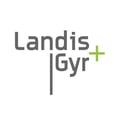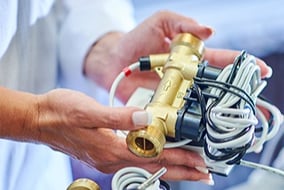Grid digitization offers utilities the chance to redefine their business models by improving their internal operations and the services they deliver to end consumers.
 It is important to distinguish between “digitalization” and “digitization.” These terms are not interchangeable. The former refers to the impact of information and communication technology (ICT) on society at large and, in particular, how it transforms the interactions between people and between people and objects. Grid digitization, by contrast, refers to creating visibility on the grid by using sensors to collect analogue data, which is then transformed into useful digital information that adds value to businesses and users. When implemented, grid digitization makes utilities much more active participants in the energy market. Rather than simply distributing energy to end consumers, distribution system operators (DSOs) now have the opportunity to work as part of a larger ecosystem that benefits all market stakeholders. Advantages of the new digital grid model include greater reliability, increased financial transparency, supply-demand and product-service integration. The potential combined result of these advances is a fully automated, resilient, ‘self-healing’ energy network.
It is important to distinguish between “digitalization” and “digitization.” These terms are not interchangeable. The former refers to the impact of information and communication technology (ICT) on society at large and, in particular, how it transforms the interactions between people and between people and objects. Grid digitization, by contrast, refers to creating visibility on the grid by using sensors to collect analogue data, which is then transformed into useful digital information that adds value to businesses and users. When implemented, grid digitization makes utilities much more active participants in the energy market. Rather than simply distributing energy to end consumers, distribution system operators (DSOs) now have the opportunity to work as part of a larger ecosystem that benefits all market stakeholders. Advantages of the new digital grid model include greater reliability, increased financial transparency, supply-demand and product-service integration. The potential combined result of these advances is a fully automated, resilient, ‘self-healing’ energy network.
“It starts with using digitization to create visibility at all levels of the power grid,” says Thierry Pollet, Head of Product Management Smart Grid at Landis+Gyr. “Utilities already have this capability at higher voltage levels, but implementing it at lower voltage levels will make all the difference.” Grid digitization at lower levels enables the capture of key voltage and current parameters and, from these, active and reactive power parameters can be derived in addition to power quality and non-electrical parameters like temperature, humidity, and vibration. Utilities can then leverage all data inputs with advanced techniques such as machine learning and analytics. This opens up considerable opportunities for new and better services to end consumers.
Key challenges and drivers for smart grid digitization
Energy infrastructure: Renewables
The enduring challenge of renewable energy sources is that they are intermittent. Smart grids make it possible to effectively manage these inputs - both from large commercial operations as well as from end users themselves. The changing consumer role in the energy market means there will be ever-increasing numbers of small- and medium-sized distributed energy resources going online. These include photovoltaic, wind, combined heat and power and direct or indirect storage. Critically, the smart grid makes it possible to balance and manage what could potentially be millions of inputs of vastly varying sizes. It is achieved by accurately predicting supply and demand and then managing it by incentivizing end users to optimize usage patterns – and it does so with the aid of storage solutions
Energy infrastructure: Storage
Effective energy storage technology significantly enhances the efficiency of smart grids. Battery storage makes it possible to control fluctuations in frequency of the power system, to automate voltage regulation, optimize demand and supply, and provide reliable back-up in blackout or disaster situations. To put it simply, energy stored in batteries during low demand cycles can be released during high demand periods. The volatility of renewable energy sources makes it necessary to compensate for frequency fluctuations and resulting network instability that can lead to operational disturbances in equipment connected to it if not properly managed. Little wonder battery energy storage solutions are gaining momentum with major utilities around the world.
ICT: Super-connectivity means better services
Improving customer service is a core issue for utilities. The huge amounts of data generated by the millions of devices connected to smart grid enables them to respond to emergencies or faults more quickly and even predict and remedy failure before it impacts end users. The net result of this ‘self-healing’ system is reduced downtime and increased customer satisfaction.
ICT: Creating efficiency through convergence
ICT also makes a greater degree of IT/OT convergence possible. IT/OT convergence refers to the integration of information technology (IT) systems with operational technology (OT) systems that monitor events, processes and devices and make adjustments in enterprise and grid control systems such as supervisory control data acquisition (SCADA). Again, the increased speed at which data can be converted into intelligent and actionable information improves the ability to better respond and adapt to customer needs. This responsiveness is enhanced still further by the fact that convergence leads to more effective asset management. Business leaders can make better investment decisions in respect of maintenance, replacement and expansion of grid assets, so both consumers and service providers gain increased value.
ICT: Cyber-security
While ICT enables smart grids it also opens the door to potential security risks, as is illustrated by partial shutdown of the Ukrainian national grid during December 2015. Privacy for end users in relation to how their electricity usage data is managed and shared is also a perennial concern. The deployment of IP-based communication networks across grids means data can be accessed by anyone from anywhere unless appropriate security mechanisms are put in place. The network and the millions of devices attached to it need to be secured as far as resources and practical realities of grid operation allow. While no solution is ever 100% secure, it is possible to achieve highly effective levels of smart grid security.
ICT: Internet of Things
The Internet of Things (IoT) will improve the customer experience and enable the creation of new utility services capable of adding value to both the end user and the energy company. This is made possible by real-time data collection and analytics enabled by industrial Internet protocols such as iPv6 that facilitate simultaneous collaboration between any number of companies as well as the integration of multiple services. For example, smart meters can communicate with a host of other objects and applications connected through the ICT network. This can be used to feed supply and demand information into the energy market and keep end users up-to-date on the latest buy and sell prices for energy.
Regulatory environment
The EU’s new environmental targets stipulated in the 2030 framework for climate and energy are built around increasing the percentage of renewables connected to the grid, reduction in greenhouse gas emissions and energy efficiency. Digitization is a vital enabler because it allows renewables to be seamlessly integrated into the grid. Furthermore, it makes the grid more efficient, which automatically prevents unnecessary production of CO2. For example, when it comes to key energy consumption areas like heating and mobility, a digital grid can route electricity where it is needed when it is needed without undue wastage.
Another reason why it’s important for utility companies to consider digitization is the impact of directives and legislation on renewables, for example, the new German regulations for grid digitization and the EU Renewables directive. These make it necessary for utilities to adapt grids to cope with increasing amounts of renewable energy sources, be they wind, solar or hydro. The intermittent nature of these sources means network operators need to be able to accurately measure, manage and react to changes as they occur.
There is further EU legislation related to efficiency. The fact that grid digitization makes network activity visible allows grid operators measure where technical losses (energy lost in the operation of the grid) occur and take the necessary measures to combat them. Utilities are also subject to local, regional and national regulation, for example, with regard to minimum delivery standards and network quality. Digitization gives energy providers the necessary reporting mechanisms to ensure simple and cost-effective compliance with regulations.
In addition to promoting energy efficiency and improved performance, the data that smart grids produce can be used to:
- forecast energy demand
- educate consumers in an effort to affect their usage patterns
- improve existing services to consumers
- offer new services
- build customer loyalty by preventing power outages
- reduce the need to build new power plants.
This data raises questions as to who owns it and who should be entitled to leverage it. In its report on “The Future Role of DSOs,” the Council of European Energy Regulators (CEER) stated that: “… consumers have the legal right to control their own data. However, DSOs, who in most cases have data directly from smart meters, have a special responsibility to act impartially and to make available necessary data to other parties, while respecting data protection legislation and the fact that consumers own their own data.” CEER suggested that there is a need for a neutral data coordinator or data hub to manage and provide access to data. Hence, a set of guiding principles has to be developed for the relevant national authorities to oversee or determine the extent to which DSOs can manage data.
Costs and benefits
A critical consideration for utilities moving towards digitization lies in deciding where, and to what level of granularity, they want to digitize. Investment in digitization has to be balanced against the extent to which it increases efficiencies and reduces costs for utilities as well as enhances value and service levels for end users. “Ideally, you would have a full digital representation of the entire grid at all times. However, this means you would have to install costly sensors at many points, which can be prohibitively expensive,” says Thierry Pollet. A further issue utilities must consider is connectivity. Data generated by sensors and smart devices have to flow over a communication network, which also comes at a cost. Hence, the level of investment required must be decided on a case-by-case basis to ensure the best possible cost/benefit ratio.
The full potential of the digital grid is comprehensively explored in the 2016 GRID4EU Report on “Large-Scale Demonstration of Advanced Smart Grid Solutions with wide Replication and Scalability Potential for EUROPE.” The project involved such DSOs as Vattenfall (Sweden), RWE (Germany), Iberdrola (Spain), Enel (Italy), and Enedis (formerly ERDF) from France. The GRID4EU projects were tested over a period of 51 months and included the monitoring of an LV network based on AMI infrastructure and intelligent equipment in secondary substations (Vattenfall); implementation of advanced control systems to increase hosting capacity and maximize the integration of distributed renewable energy sources in the MV network (Enel), to name a few.
In brief, the results of the GRID4EU study show that voltage and load control are beneficial in increasing network hosting capacity in distribution grids; the interaction of distributed generation and demand is a key to increasing network hosting capacity; and fault localization and restoration time can be reduced with greater automation at MV and LV levels.
The fact that smart grid systems rely heavily on ICT makes it essential to promote and enable the “convergence” of electric distribution and communication infrastructures. The “human component” is of paramount importance in smart grids and the necessary skills, training and processes must be in place to enable them.
The road ahead
Europe is currently defining its future energy model. As you read this, the European Commission is working on proposals for Energy Union, which will come to a conclusion in 2016 in the form of new legislation. One result will be a new electricity market design that determines the roles that DSOs, as regulated entities, can take up. “The role of distribution system operators will evolve from ensuring safe and reliable delivery of electricity to acting as market facilitators by empowering end users and engaging with the other market stakeholders,” says Thierry Pollet. In addition, end users will become more active participants in the system. This has the potential to help keep energy affordable. For example, end users could offer improved flexibility by making their own power generation available for grid control, or by sharing electricity produced within the community. Regardless of the roles end users play, they will need full transparency on electricity market pricing for their participation to work efficiently. Digitization makes this possible.
Where grid digitization is already delivering
There are a number of countries in Europe where grid digitization is already well underway.
- In the past two years, Landis+Gyr has supplied over 36,000 smart grid systems to Poland. The smart grid terminals were installed in substations for low voltage network monitoring and help control both technical and non-technical energy losses.
- In Germany, according to new regulations (as of January 2016), all decentralized energy sources with an output of more than 100 MW are required to have functionality that allows the energy generated to be distributed to the network directly. Developed by Landis+Gyr in cooperation with EnBW 3,000 SyM2-compliant S750 grid modules are being installed by Netze BW in Germany as part of the solution for managing the electric feed of large and medium-sized (≥ 100 kW) solar, wind, and other renewable energy power plants.
- In the Netherlands, there is currently a strong focus on improved customer service and operational efficiency, including a reduction of the number of customer minutes lost (CML) in the event of an outage (SAIDI). Deployment of 1,450 Landis+Gyr’s distribution automation systems in medium and low voltage networks to date enables DSOs to address this challenge.
Visit our European Utility Week site to learn more:






